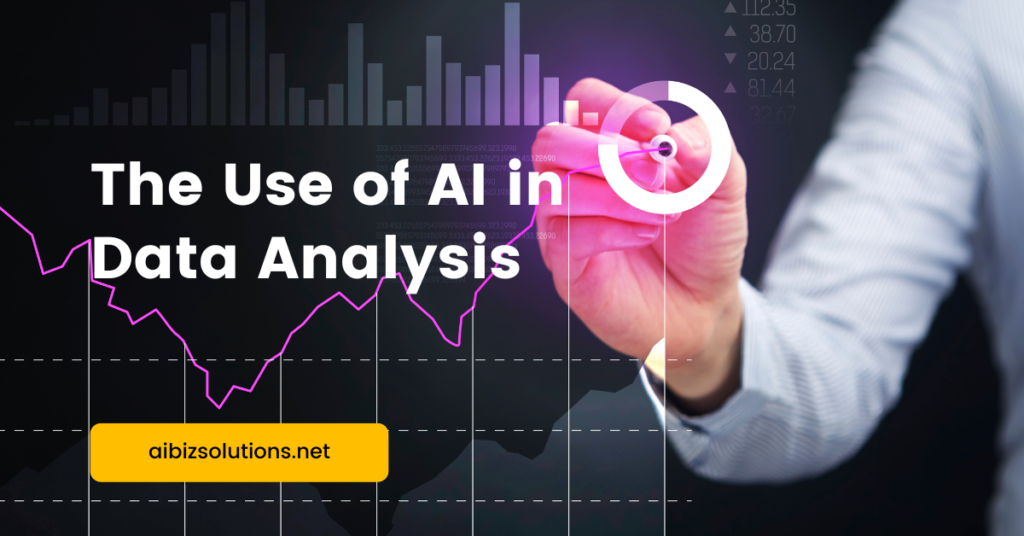
Welcome to our article on leveraging the power of Chat GPT for data analysis. In this section, we will explore How to Use Chat GPT to Analyze Data, and especially how to effectively utilize Chat GPT’s natural language processing capabilities to analyze data. With its advanced algorithms, Chat GPT can reveal hidden patterns and trends, providing valuable insights for your exploratory data analysis needs. Whether you’re looking to answer questions, perform calculations, or even obtain code snippets, Chat GPT can assist you in various data analysis tasks.
The Power of Prompts in Chat GPT Data Analysis
Prompts play a crucial role in maximizing the potential of Chat GPT for data analysis. With its advanced natural language processing capabilities, Chat GPT can analyze data and uncover valuable insights. However, to achieve accurate and comprehensive results, it is essential to provide the right prompts.
By asking specific questions and requesting precise analyses, users can leverage Chat GPT’s capabilities to obtain the desired insights from their datasets. For example, if the goal is to identify outliers in a dataset, providing a prompt like “Find the outliers in the dataset and explain their significance” can guide Chat GPT to generate accurate analysis results.
The effectiveness of prompts lies in their ability to guide Chat GPT’s understanding and analysis. By formulating prompts that align with the intended data analysis task, users can ensure that Chat GPT provides relevant and insightful information. Additionally, detailed prompts enable users to specify the level of analysis required, such as asking for correlations or performing complex calculations.
Maximizing the Potential
To make the most of Chat GPT’s data analysis capabilities, it is important to experiment with different prompts and iterate on them. By refining prompts based on the specific requirements and nuances of the dataset, users can enhance the accuracy and relevance of the insights generated.
Furthermore, it is beneficial to provide context within prompts to ensure Chat GPT understands the desired analysis in the appropriate domain. For instance, including information about the industry, specific variables of interest, or the purpose of the analysis can help Chat GPT deliver more tailored results.
In conclusion, prompts are a powerful tool when using Chat GPT for data analysis. By crafting precise and detailed prompts, users can harness Chat GPT’s capabilities to obtain accurate insights and facilitate the analysis of complex datasets.
Related Post: Top AI Finance Tools and Solutions for 2024
How to Use Chat GPT to Analyze Data: The Experiment
Chat GPT’s ability to analyze data is an intriguing concept that warrants experimentation. By designing an experiment that incorporates data analysis prompts, we can evaluate the effectiveness of using Chat GPT for data analysis tasks. The experiment aims to assess how well Chat GPT can solve complex data analysis problems and provide accurate insights.
During the experiment, participants will provide prompts to Chat GPT that require various data analysis tasks. These tasks could range from identifying outliers and determining correlations to generating summary statistics and performing exploratory data analysis. By evaluating the accuracy of Chat GPT’s responses and insights, we can gain valuable insights into its potential as a tool for data analysis.
Designing the Experiment
To ensure the experiment’s validity, it is crucial to define clear objectives and establish a comprehensive set of prompts that cover a wide range of data analysis techniques. The prompts should be designed to test Chat GPT’s ability to handle different types of datasets, including structured, unstructured, and time series data. By incorporating a variety of data analysis tasks and datasets, we can evaluate the generalizability and robustness of Chat GPT for data analysis purposes.
The experiment will require participants to provide input datasets and specific data analysis questions or tasks. They will then interact with Chat GPT, receiving real-time responses and insights. Participants will also be asked to compare Chat GPT’s analysis with their own knowledge and expertise, providing feedback on its accuracy and usefulness.
By conducting this experiment, we aim to gain a deeper understanding of Chat GPT’s capabilities and limitations in the context of data analysis. The results will provide insights into how effectively Chat GPT can be used as a tool for data analysis and its potential to enhance the overall data analysis process.
Leveraging Chat GPT for Exploratory Data Analysis (EDA)
Exploratory Data Analysis (EDA) is a crucial step in the data analysis process, allowing analysts to gain initial insights and understand the characteristics of their datasets. With the advanced natural language processing capabilities of Chat GPT, this phase of data analysis can become even more efficient and insightful.
By utilizing Chat GPT for EDA, analysts can ask specific questions about their dataset and receive real-time insights. For example, they can inquire about factors that may influence certain outcomes, identify patterns or correlations within the data, and uncover any skewed distributions. This interactive approach enables analysts to quickly explore different aspects of their data and generate meaningful insights.
One of the key advantages of using Chat GPT for EDA is its ability to provide summary statistics and visualizations in a conversational manner. Analysts can ask questions like “What are the summary statistics of this variable?” or “Can you show me a histogram of this distribution?” Chat GPT can generate textual explanations of statistical results and even provide additional context for data visualizations, making it easier for analysts to interpret and communicate their findings.
Enhancing the EDA process with Chat GPT
Integrating Chat GPT with popular data analysis tools can further enhance the EDA process. By seamlessly incorporating Chat GPT into existing workflows, analysts can harness its natural language processing capabilities while leveraging the strengths of their preferred data analysis tools. This integration allows for a more comprehensive and seamless analysis of datasets.
Overall, leveraging Chat GPT for EDA offers significant potential for analysts looking to gain valuable insights from their datasets. Its interactive and conversational approach to data analysis opens up new possibilities for exploring and understanding data. By combining Chat GPT with other data analysis tools, analysts can streamline their EDA process and make data-driven decisions with greater confidence.
Related Post: The Ultimate Guide to the Best AI Marketing Tools for Business Growth in 2024
Integrating Chat GPT with Data Analysis Tools
Chat GPT, with its advanced natural language processing capabilities, can be seamlessly integrated with existing data analysis tools to enhance their functionalities. By combining the power of Chat GPT’s language understanding with the strengths of specialized data analysis tools, users can achieve a more comprehensive and insightful analysis of their datasets.
One way to integrate Chat GPT with data analysis tools is by using it to generate textual explanations of statistical results. While traditional data analysis tools provide numerical outputs, Chat GPT can convert these results into easy-to-understand explanations in plain English. This not only improves the interpretability of statistical findings but also enables users to communicate these insights more effectively to stakeholders.
In addition, Chat GPT can provide valuable context for data visualizations. By integrating Chat GPT with visualization tools, users can generate textual descriptions that accompany charts and graphs, providing a deeper understanding of the data being presented. This combination of visual and textual information enhances the overall data analysis experience and facilitates better decision-making.
Enhancing the Data Analysis Process
Integrating Chat GPT with data analysis tools can greatly enhance the data analysis process. Chat GPT’s natural language processing capabilities allow users to ask questions about the dataset and receive meaningful insights in real-time. This interactive approach to data analysis enables users to explore their datasets more dynamically and discover hidden patterns or correlations that may have otherwise gone unnoticed.
By combining the analytical power of data analysis tools with the language understanding of Chat GPT, users can tackle complex data analysis tasks more efficiently. Whether it’s performing advanced calculations, identifying outliers, or conducting sentiment analysis, the integration of Chat GPT and data analysis tools opens up new possibilities for extracting insights from diverse datasets.
In conclusion, integrating Chat GPT with data analysis tools offers a synergistic approach to uncovering insights from data. By leveraging the language understanding capabilities of Chat GPT and the analytical power of specialized tools, users can enhance the interpretability, context, and interactivity of their data analysis processes. Experimenting with this integration can lead to more efficient and insightful data analysis, paving the way for data-driven decision-making and actionable insights.
Conclusion
Chat GPT shows great promise as a versatile tool for data analysis. Its advanced natural language processing capabilities enable users to uncover hidden patterns and trends in their datasets, making it a valuable asset for exploratory data analysis. By providing the right prompts, users can leverage Chat GPT to answer questions, perform calculations, and even provide code snippets for various data analysis tasks.
While prompts play a crucial role in maximizing Chat GPT’s potential, it is important to note that the tool may have limitations in performing complex statistical analyses or data visualizations. However, its strength lies in its ability to generate meaningful insights and summaries of datasets in real-time, enabling data-driven decision-making.
Integrating Chat GPT with existing data analysis tools can further enhance its capabilities. By leveraging its natural language processing, users can generate textual explanations of statistical results and provide additional context for data visualizations. This integration can lead to a more comprehensive and insightful analysis of datasets, ultimately improving the overall data analysis process.
By experimenting with Chat GPT and incorporating it into data analysis workflows, users can achieve more efficient and insightful results. While it may not replace dedicated data analysis tools, Chat GPT can certainly augment the data analysis process, particularly in the areas of data exploration, data cleansing, and insights generation.
Related Post: The Best AI-Powered Sales Tools for Optimizing Revenue
FAQ
How can I use Chat GPT to analyze data?
Chat GPT can be used to analyze data by providing the right prompts and specific questions related to data analysis tasks. By leveraging its natural language processing capabilities, Chat GPT can uncover hidden patterns and trends in data, providing valuable insights and summaries of datasets.
What is the role of prompts in Chat GPT data analysis?
Prompts play a crucial role in maximizing the potential of Chat GPT for data analysis. By providing detailed prompts and specific analyses, users can leverage Chat GPT’s capabilities to obtain accurate and comprehensive insights from their datasets.
Can I conduct experiments using Chat GPT to analyze data?
Yes, conducting experiments to test Chat GPT’s ability to analyze data can yield interesting results. By providing prompts that require data analysis tasks, users can assess Chat GPT’s performance in solving complex problems and determine the accuracy of its answers and insights.
How can Chat GPT enhance exploratory data analysis (EDA)?
Chat GPT can enhance the EDA process by quickly providing valuable insights and summaries of datasets. By asking questions about the dataset, users can gain insights into factors affecting outcomes, identify skewed distributions, and generate meaningful insights.
Can Chat GPT be integrated with other data analysis tools?
Yes, Chat GPT can be integrated with existing data analysis tools to enhance their capabilities. By leveraging its natural language processing, users can generate textual explanations of statistical results, provide additional context for data visualizations, and improve the overall data analysis process.
What is the potential of Chat GPT for data analysis?
Chat GPT offers promising potential as a tool for data analysis, particularly in areas such as data exploration, data cleansing, and insights generation. While it may have limitations in performing complex statistical analyses or data visualizations, its natural language processing capabilities make it a valuable asset for gaining initial insights and enhancing data analysis processes.

